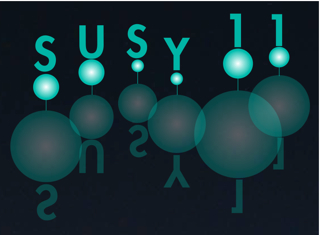Speaker
Dr
Tong Li
(University of Delaware)
Description
We investigate the collider phenomenology of gluino-bino co-annihilation scenario at the 7 TeV LHC. This scenario can be realized in a class of realistic supersymmetric models with non-universal gaugino masses and t-b-\tau Yukawa unification. The NLSP gluino and LSP bino should be nearly degenerate in mass, so that the typical gluino search channels involving leptons or hard jets are not available. Consequently, the gluino can be lighter than various bounds on its mass from direct searches. We propose a new search for NLSP gluino involving multi-b final states, arising from the three-body decay \tilde{g}-> b\bar{b}\tilde{\chi}_1^0.
The ATLAS experiment has recently presented its search results for final states containing jets and/or b-jet(s) and missing transverse momentum, corresponding to an integrated luminosity of 165 pb^{-1}. We employ this data to constrain a class of supersymmetric SU(4)_c X SU(2)_L X SU(2)_R models with t-b-\tau Yukawa unification, in which the gluino is NLSP. We find that NLSP gluino masses below ~300 GeV are excluded by the ATLAS data. For LSP neutralino mass ~200-300 GeV and \mu>0, where \mu is the coefficient of the MSSM Higgs bilinear term, the LHC constraints in some cases on the spin-dependent (spin-independent) neutralino-nucleon cross section are significantly more stringent than the expected bounds from IceCube DeepCore (Xenon 1T/SuperCDMS). For \mu<0, this also holds for the spin-dependent cross sections.
Primary authors
Mr
Adeel Ajaib
(University of Delaware)
Dr
Kai Wang
(Zhejiang University)
Prof.
Qaisar Shafi
(University of Delaware)
Dr
Tong Li
(University of Delaware)
